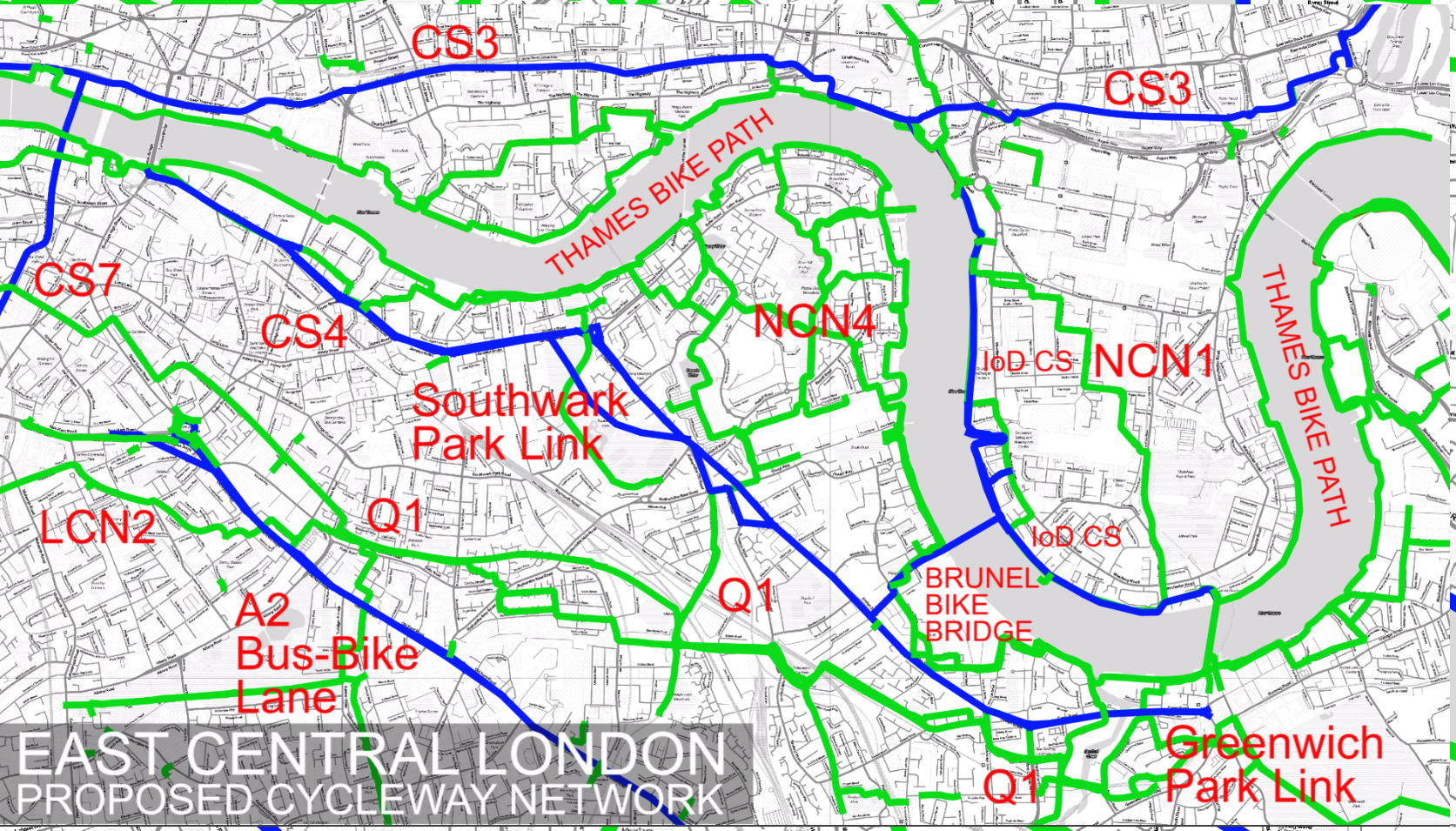The landscape architecture of cycling and cycle planning
The video gives a snapshot of London’s best and worst cycling conditions, hinting that the city needs more cycling heavens, fewer cycling hells and a lot less purgatory. List of 18 London cycling posts and videos.
Cycleway planning and design are often regarded as a branch of transport planning a matter for engineering-only. This is wrong. In Vitruvian terms, cycleways involve issues relating to
- commodity: cycleways should be functional, comfortable and convenient
- firmness: cycleways should be safe, smooth and durable
- delight: cycleways should provide users with such a pleasurable experience that more and more of them are attracted to go by bike
Nor should cycleways be treated as a separate facility that can be designed in isolation. They must be desire lines. Provision for cycling is an inextricable aspect of street design, highway design, park design, forest design and landscape planning in all its varieties. The objective is to create urban and rural landscapes in which design for cycling is a primary objective.
We need a London Cycling Landscape (LCL) with provision for cyclists throughout the urban area. Cycle routes require interconnection, as do telephone cables. But planning for cycling is more than network planning. It involves the composition of streets and buildings with landform, water and vegetation – to create good landscape as an environmental public good.

